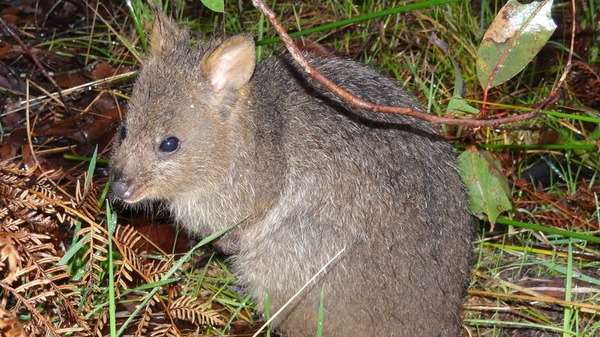Survey reveals quokka numbers decimated, a year after devastating bushfire

Quokkas are popular 'selfie' photograph subjects for visitors to Rottnest Island, but the 'happiest animal on earth' has less to smile about in the South West, a year after a devastating bushfire.
One of WA's worst bushfires decimated quokka numbers near Northcliffe, 360kms south of Perth, according to conservationists.
The blaze, sparked by lightning strike in February 2015, burned 98,000 hectares of quokka habitat.
Wildlife ecologist Karlene Bain says only 39 out of 500 quokkas remain in the fire affected area – a 77 per cent decline.
Dr Bain says the fire was "devastating" for the Northcliffe sub-population.
"It was a very intense fire and very fast-moving, so most of the animals didn't have a huge opportunity to move out of its path," she says.
Dr Bain took part in a quokka survey by the World Wildlife Fund Australia and WA Department of Parks and Wildlife from February to June this year.
The aim was to assess the fire's impact on the vulnerable small wallaby species, which many West Australians may be surprised to learn live on the mainland.
Quokkas exist in small, scattered sub-populations from Serpentine to the South Coast, including a second offshore group on Bald Island near Albany.
The fire-affected Northcliffe sub-population is part of the Southern Forests population, between Nannup and Denmark.
These marsupials are vital to the species' genetic diversity, according to Dr Bain.
"It's the most robust mainland population and… very, very important from a genetics perspective," she says.
"When you look at the animals on Rottnest Island, it's a very poor, very small genetic pool with a fairly low level of diversity in terms of the DNA.
"[Southern Forests] is a much, much larger genetic pool and the diversity of DNA is through the roof in comparison."
Dr Bain says protecting the surviving quokkas, which are restricted to small pockets of bushland and vulnerable to cats and foxes, is crucial but will be a challenge.
"The animals in those refuge patches have to survive long enough for the surrounding habitat to regenerate to a point where they can move through the landscape and recolonise some of the habitat further in," she says.
It is too early to tell if the unburned bushland will be able to support the surviving quokkas for long enough to rebuild their post-fire numbers, according to Dr Bain.
"We think between four to six years is how long it's likely to take before the habitat is able to support the population again."
WWF plan to use surveys, remote sensor cameras and radio tracking collars to monitor the quokkas re-colonisation patterns, while the department is responsible for fire management and predator control.
The findings were published by World Wildlife Fund Australia in September.
More information: The report is available online: awsassets.wwf.org.au/downloads … ort_sept_2016_1_.pdf
Provided by Science Network WA
This article first appeared on ScienceNetwork Western Australia a science news website based at Scitech.


















